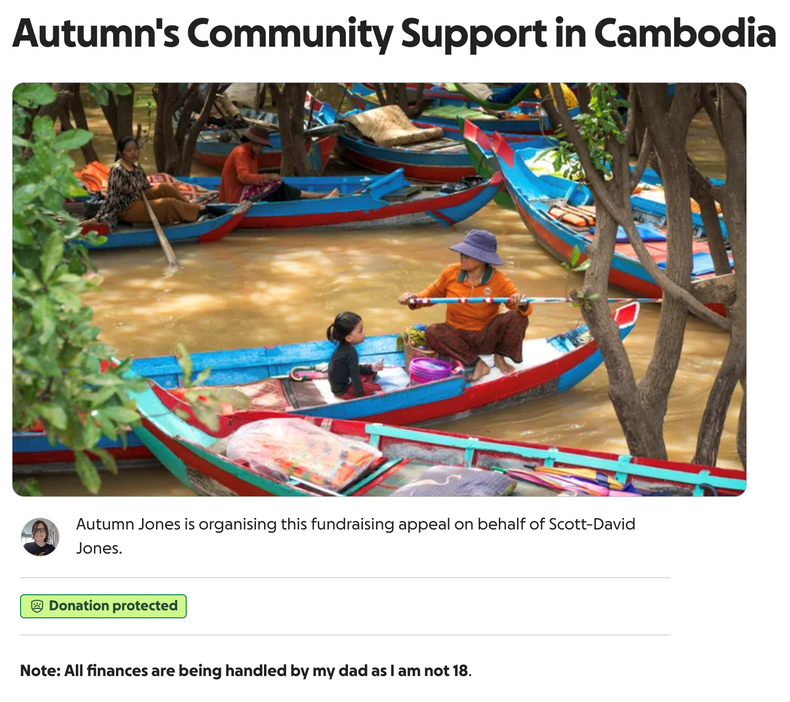My daughter's GoFundMe taught me a surprising lesson about trust and tech

Written by Scott-David Jones from In-Line Studio
I recently had one of those incredibly proud parent moments.
My daughter started a GoFundMe campaign to help raise money for her expedition to Cambodia, where she will be tackling projects to help the local community.
She took the lead entirely, writing a compelling story, selecting the perfect images, and setting her fundraising goal. It was a fantastic display of initiative, empathy, and digital savvy.
Everything was seamless... until we reached the final step: linking a bank account to receive the donations.
Because my daughter is under 18, she is not legally able to be the beneficiary of a fundraiser; the platform requires an adult to manage the withdrawal of funds.
This is, of course, a sensible and necessary policy for legal and security reasons. As her parent, I was happy to step in, link my bank account, and verify my identity.
And that's where a simple administrative step created a significant perception problem.
Once I was verified, the GoFundMe page automatically and unchangeably listed me as the beneficiary. The banner at the top of the campaign, seen by every potential donor, now reads: "Autumn Jones is fundraising for Scott-David Jones."
The reality couldn't be further from the truth. She is fundraising for her cause, and I am simply the legal conduit for the funds.
But the platform's design doesn't have the nuance to explain this. This small, technical detail creates a trilemma of unintended consequences:
1 Confusion: Potential donors arrive on a page inspired by my daughter's story, only to be told they are donating to me, an adult who is not mentioned anywhere in the campaign narrative. Why would they be giving me money?
2 Erosion of trust: In a world where we must be vigilant about online scams, this discrepancy immediately raises red flags. It looks, at first glance, like a classic bait-and-switch. This could deter genuinely kind-hearted people who are rightly cautious about where their money is going.
3 A question of authenticity: The platform’s structure inadvertently undermines my daughter’s agency and ownership of her project. It shifts the focus from her initiative to my financial administration.
We've since done our best to mitigate this by adding a clear disclaimer at the top of the campaign story, explaining the situation. But it's a workaround for a systemic issue.
This experience is a fascinating case study in the gap between platform policy and user reality.
While FinTech platforms must have rigid rules for security and compliance, there's a need for greater flexibility in user experience (UX) to accommodate common scenarios like a parent supporting a minor's project.
A simple feature, like a "Parent/Guardian Managing for a Minor" option, could resolve this entirely, maintaining both security and transparency.
It’s a reminder that as we empower the next generation to use digital tools for good, the platforms themselves must also evolve to support them authentically.
